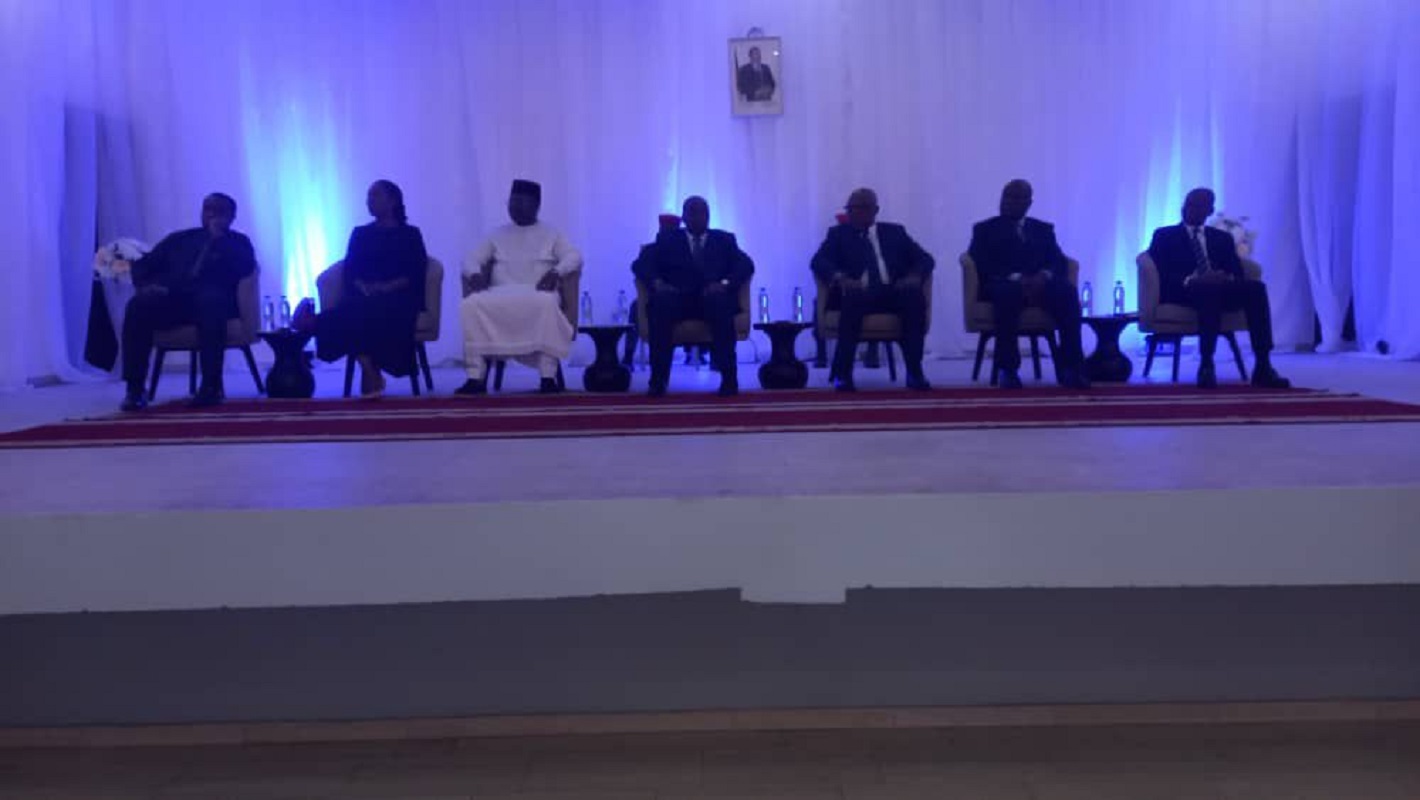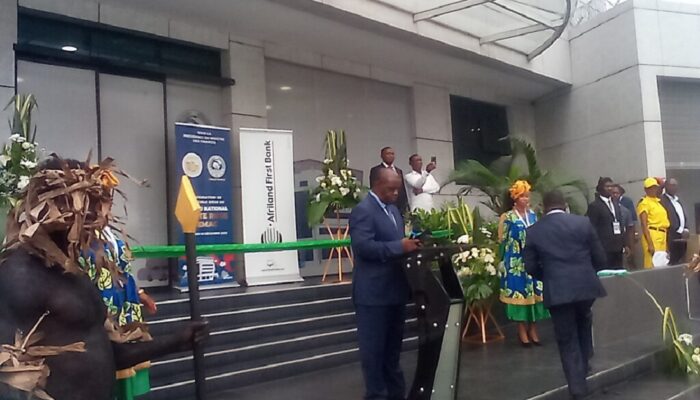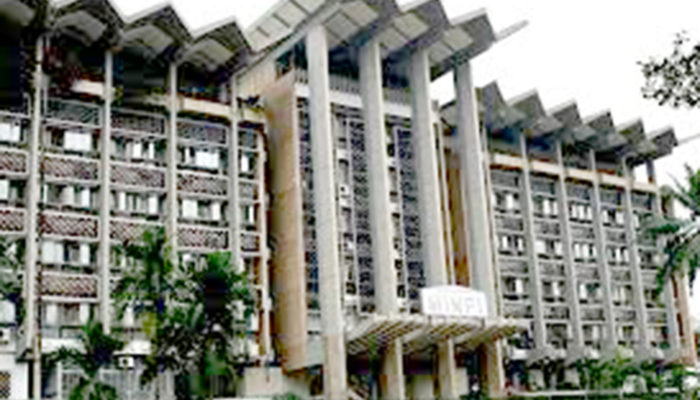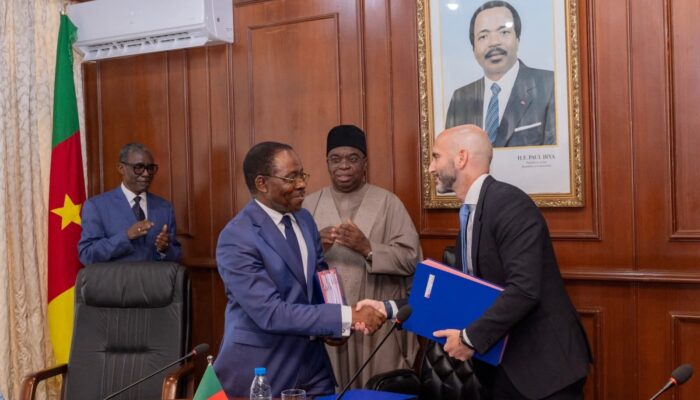The Minister of Finance, Louis Paul Motaze, accompanied by the Minister Delegate to the Minister of Economy, Planning and Regional Development, Paul Tazong, was in Douala on February 13, 2025 to present to the business community and regulatory institutions, the State Financing Plan for the 2025 financial year. It will require the State to resort to issuing public securities amounting to 380 billion FCFA on the capital markets.
Having become a tradition, the economic capital once again hosted the presentation ceremony of the State Financing Plan for the 2025 financial year that the Minister of Finance (MINFI), Louis Paul Motaze, with at his side the Minister Delegate to the Minister of Economy, Planning and Regional Development (MINEPAT), Paul Tazong, came to unveil to investors. It follows Presidential Decree No. 2025/025 of January 28, 2025, through which the Head of State, Paul Biya, gives the authorization to resort to public securities issues amounting to 380 billion FCFA on the capital market, intended to finance development projects included in the Finance Law for the 2025 financial year.

These resources should enable the State to continue and complete numerous projects in the road, mining, energy and social sectors in the pursuit of the implementation of the National Development Strategy for the 2020-2030 Horizon (SND 20-30), the implementation of the import-substitution policy, the continuation of the preparation and implementation of major second-generation projects. Without being exhaustive, Paul Tazong will list some of them: – The completion of the retention dam to supply the completed and operational Lom Pangar hydroelectric project, which requires a budgetary allocation of 20 billion FCFA; – The Kribi Industrial-Port Complex project, the first phase of which has been completed and phase 2 50% completed, requires a financing requirement of 130 billion FCFA to complete it; – The Nachtigal dam, the finalization of which, in particular in the construction of the 65 km power transmission line, has an estimated financing requirement of 400 billion FCFA; – The Yaoundé and surrounding area water supply project (PAEPYS), is 95% complete, but whose requirements amount to 20 billion FCFA to finalize it; – The Douala Eastern entrance development project, with a total cost of 87 billion FCFA, is 83% complete, and the financing requirement for its completion is estimated at 15 billion FCFA.
Over the same period, in terms of expenditure, 884.5 billion FCFA were repaid on time to investors-holders of public debt securities, an increase in relative value of 24.11% compared to 2023. Similarly, 79 billion FCFA were paid as part of the counterpart funds for jointly financed projects and 47.4 billion FCFA were allocated to the reimbursement of VAT credits. These are all arguments that reflect a healthy budgetary trajectory, reinforcing the credibility of Cameroon’s signature on the financial markets. In short, Cameroon has honored all its repayment deadlines on time. “These results, beyond the raw figures, demonstrate growing confidence in Cameroon’s signature and the attractiveness of our financial instruments ,” said Louis Paul Motaze.
However, aware that the global environment is marked by persistent uncertainties: geopolitical tensions, instability of capital markets, inflationary pressure, scarcity of concessional financing, etc. In Cameroon, this has had serious repercussions on capital markets with the main obstacles being: – Restricted access to international markets, leading to dependence on foreign currencies and imports; – The limited capacity of local banks to finance public debt due to prudential constraints; – Insufficient mobilization of national savings, accentuated by the absence of an efficient secondary market; and – The threat of a public debt crisis in the medium term in the absence of diversification of financing sources. To provide an efficient response, the Ministry of Finance has decided to mark the 2025 financing program with: – A diversification of financial instruments, to better meet investors’ expectations; – An extension of maturities, allowing more efficient management of its portfolio; – An optimized refinancing strategy, in order to better distribute the debt profile and ensure long-term sustainability; and – The establishment of specific issues to finance identified assets. This approach would strengthen the support of small investors and even the diaspora. As an illustration, a bond issue dedicated to the construction of the bridge in Fotokol would allow subscribers to see the concrete impact of their investment, thus promoting increased participation of the sons and daughters of the locality. And to conclude: ” This market is ours. It is the instrument by which we build the Cameroon of tomorrow. Each security issued is a stone laid on the edifice of our development. Each investor who places his trust in our instruments is a builder of our collective future . “






